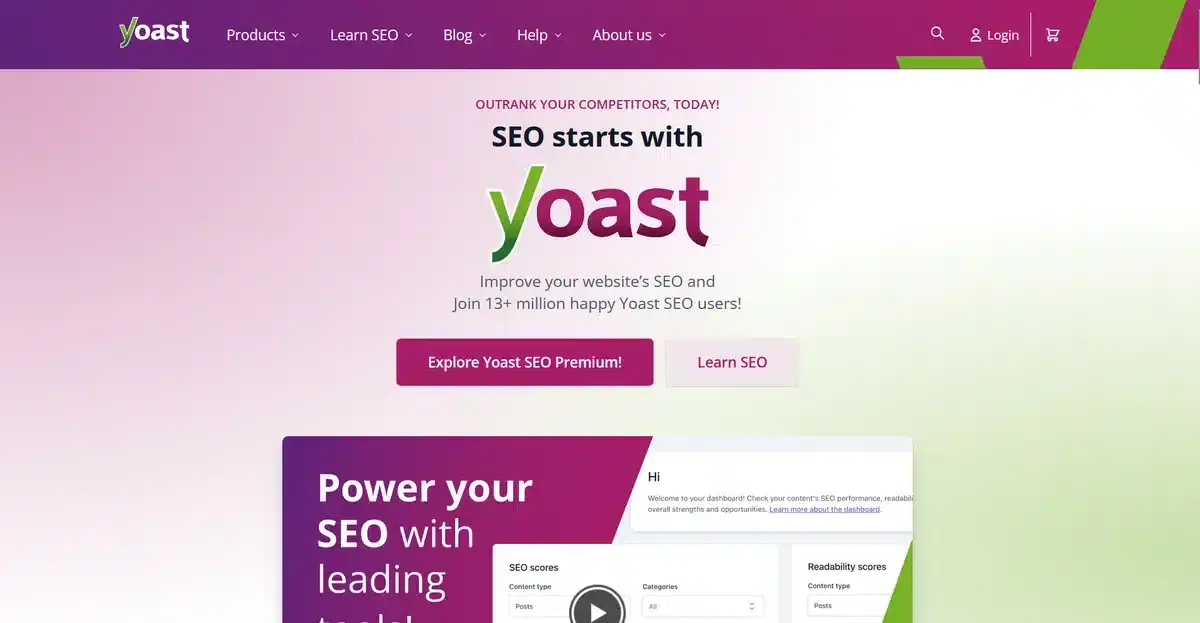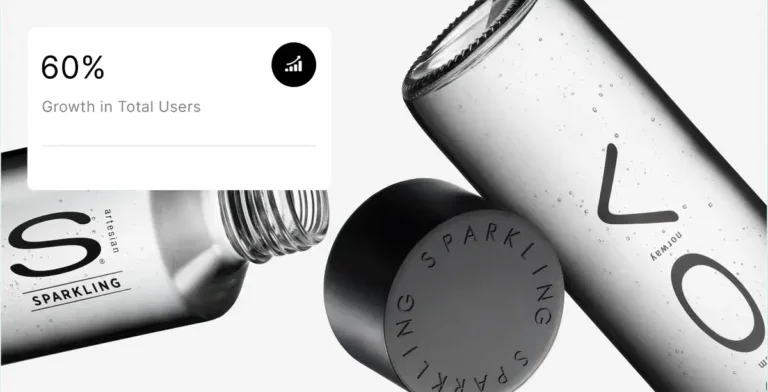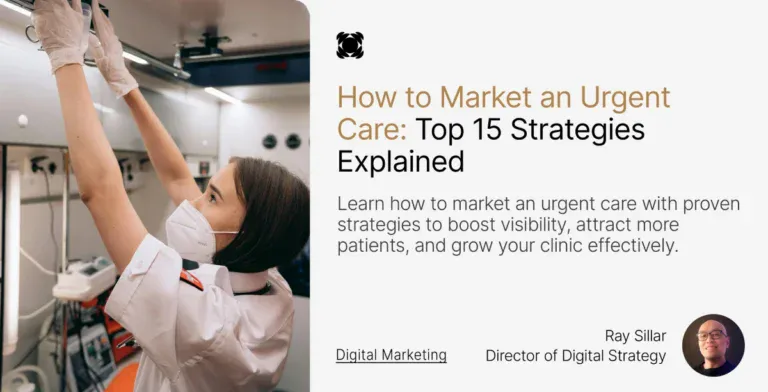It has never been more important to stay on top of the latest SEO best practices like in 2026.
When more than 53% of all web traffic comes from organic searches, it is easy to understand why staying on top of SEO best practices is necessary.
SEO is always evolving, and ideas and strategies that were working 3 months ago might be obsolete by now.
If you want to thrive and grow your business this year, you need to learn everything about SEO while also applying it to your strategy.
But what exactly are you supposed to focus on?
That’s what this article is for! We found the top 20 SEO best practices of this year that every brand, no matter the niche or industry, should implement ASAP.
If you go through this list and successfully add these practices to your monthly SEO strategy, you’ll grow in no time.
Want to improve your website’s SEO but don’t know where to start? Let us help.
Our 20 Favorite SEO Best Practices of 2026
The list isn’t ranked by importance. All these practices should be included in your SEO strategy.
All of these are also practical and actionable.
No super complex practices that take too long to do. We want your marketing efforts to be fruitful and effective starting today.
1. Optimize Your Images With SEO in Mind
Having full-quality and non-compressed images on your website is a great way to lose visitors nowadays.
While having full-size images on your website might seem like a great idea, in reality, it does the complete opposite.
Large high-quality images take longer to load and can severely reduce your website’s performance. This isn’t only bad for customers getting frustrated at load times, but it’s also bad for your overall visibility since Google evaluates sites not just on keyword dominance, but on loading speed and structure as well. This means that amazing looking images can work against you if you’re not careful.
This means that optimizing your images into a smaller file type is vital for SEO.

The best type of file you can change your images to this year is WebP.
This image format developed by Google, strikes the perfect balance between image quality and compression. It minimizes quality loss while keeping file sizes a lot smaller.
2. Don’t Forget the Alt Text
While we’re on the topic of images, don’t forget to add alt text to all of your images.
While it might seem like a waste of time, it actually helps both for SEO and for accessibility purposes.
That being said, remember to use the alt text section of every image to describe the image.
Don’t try to use it as a keyword placeholder and that’s it.
If possible, try to weave in your main or secondary keyword as long as it’s relevant to the image.
Alt text supports people with disabilities. It also helps search engines grasp your content better and improve its ranking.
3. Improve Your Website’s Loading Speed
Having a fast-loading website is mandatory.
Not only does it directly affect your SEO, but it also increases your bounce rate due to people not wanting to wait for a page to load.
If your page is taking more than 3 seconds to load, then it’s time for you to start making adjustments.
But which adjustments are the best to improve your load times?
1. The most important one by far is image optimization. We talked about it earlier in the article and we’ll mention it again because it’s THAT important.
2. Ensure that you’re using a reputable hosting service. Bad and sketchy hosting services will not only go down on occasion, but will make your pages take longer to load.
3. Make sure your website pages are optimized for speed and functionality.
If you have plugins installed that you don’t use anymore, make sure to delete them altogether. Anything that serves no purpose on your website should be deleted ASAP.
4. Pick the Right Keywords
It may seem obvious, but using the correct keyword for every page is vital, especially if you’re building and managing multiple landing pages or blog posts.
Take your time to do the proper SEO research needed before you start writing content or working on new pages for your website.
You don’t want your good content to go to waste because of bad SEO practices.
5. Add Your Main Keyword as Early as Possible
You probably know that using your main keyword multiple times is essential.
But did you know that placing it in different spots can boost your SEO too?
Ensure that when you add content to your new page, that your main keyword appears at least once in the first paragraph. Google prioritizes content at the tops of the page, so this placement strengthens your SEO
Don’t just cram as many main keywords as possible in the hopes you rank higher though. While you want your SEO to work as well as possible, cramming as many main keywords does the opposite effect for Google and makes your visibility go down.
Not only that, but using an excessive amount of keywords will be obvious to readers and will get tiring after a bit.
6. Find Broken Links and Fix Them
Having broken links on any page is an issue SEO-wise.
When a search engine is crawling through your website and it finds a broken link, it’ll cause them to flag an error there, which in turn can hurt your rankings.
Does that mean that you have to go through every page manually and click every link every week to make sure that your website doesn’t have any broken links?
Absolutely not. There are tools that can find the broken links for you instead. The most popular by far is Broken Link Checker. It’ll go through all of your website and flag the broken links you have. This way you can work on replacing or removing the broken links altogether without issues.
7. Don’t Make Your Content Hard to Read
When it comes to SEO best practices of 2026, making sure that your content is easy to skim through and understand quickly is high on the list.
Keep in mind that your website visitors come from all over the world. They may have different levels of education.
This means that writing while avoiding jargon or terminology that might be a bit complex is necessary for good readability.
If there are sections where you have to use technical terms, make sure to explain them properly.
This becomes crucial on service pages, where being clear and straightforward is a must. Avoid using confusing terms or wording that is complicated as it might overwhelm users and make them leave.
Unsure if your service page is up to par with the rest of your website? Here are some service page examples that can help you compare and get inspired by.
8. Set SEO Friendly URLs
When writing your URLs, try to make them short and sweet. A mistake we see all the time with URLs is that the whole title is added to them without any optimization at all.
The one rule to follow when it comes to URLs is that you should ALWAYS have your main keyword in it. After that, you can add words that are relevant to the page itself.
For example, if your blog post uses “best quad exercises” as its main keyword, then your URL should have that exact keyword added.
The URL could look something like this: “https://fitnesswebsite.com/blog/best-quad-exercises/”
9. Structure Your Content Better
As you build your pages, ensure that your headlines follow proper hierarchy. This dramatically improves crawlability for search engines and gives users a simple way to locate the specific piece of information they are looking for.
Headlines have a simple rule: use H1 for titles, H2 for key sections, and H3 or lower for further structure.
While you can go all the way down to H6, we would recommend that most websites use headlines from H1 to H4.
10. Write a Proper Meta Description
When it comes to the best SEO practices of 2026, this is one that we see websites struggling with the most.
Meta descriptions are incredibly important and deserve your complete attention when creating them. Why? Because they impact how your page ranks while also providing visitors with a fast and accurate summary of your content.
This means that a good meta description can attract and push away potential visitors depending on how well thought it is.
As you think and write your meta description, think about the audience who would be looking for this page and their intent. Then write in an active voice that would incentivize them to click on the link. And of course, remember to stay under 155 characters to ensure that your whole description is visible on Google.
11. Internal Linking is King
This should come as no surprise; internal linking is a must for any website trying to improve its SEO efforts.
The best part is that internal linking is easy and can be done in no time at all.
All you have to do is add the link of one of your website pages to another. But wait a minute, you don’t want to simply add random links everywhere that make no sense.
Internal links should always be contextually aligned with the destination page. Choose an anchor text that properly represents the content of the link in order to maintain clarity and improve SEO overall.
For example, if we want to link our rebranding checklist blog post, we wouldn’t link it to random words.
Instead, we would grab something like “rebranding checklist” and use it there instead.
12. Manually Approved Blog Comments
Spam bots in comment sections aren’t as common as they used to be years ago, but they can still appear in your comments sometimes. Even if the SEO impact from them is small nowadays, it’s best to avoid this issue from the start.
If you’re using WordPress, you can make it so you have manually approved comments before they go live on your page.
While it’s more work on your end, it also ensures you don’t have bots in your comment section.
13. Publish Exceptional Content
We shouldn’t have to be saying this when talking about SEO best practices for 2026, but just to make sure, don’t forget to create good content!
It’s easy to lose focus on creating quality content when you’re trying to optimize everything for SEO.
Remember, you’re creating content for people, not robots. Even if you have a law firm website, you should be making content for potential clients who might see your blog as a sign of authority.
Looking for a way to improve your website’s SEO but feeling a bit lost? We can help.
14. Fix 4xx Errors When Possible
4xx errors are pages with broken links inside your website that result in 2 different results:
- 404: The page you searched for was not found.
- 410: The page was permanently deleted and you won’t be able to access it in the future.
There are several reasons why these could pop up when searching for a page on your website, but most of the time it’s due to changes to the URL.
15. Create Content With Search Intent in Mind
When creating content, you should always consider “why” a user would be searching for something. Does it solve an issue? Are they looking to learn more about something? By knowing why they are searching for something, you are able to tailor your content toward it.
When
If they want to learn more about something you have, you can create articles and content that leans more towards the informative side of content.
The last thing you want to do is create content that serves no purpose for your visitors.
16. Use an SEO-friendly theme
Buying a website theme can be tricky. You have to balance getting good features, a good price, and an SEO-friendly code that isn’t bloated.
When searching for themes make sure that you check reviews and that you personally test their demo page so you can gauge how fast the website loads.
You can use a page such as PageSpeed Insights if you want to nitpick and make sure you know how fast it loads.
Alternatively, you can get a custom website instead and ensure that it loads fast and has all the features your brand needs.
We recently made a comparison article between template websites and custom websites you can read to find out what’s best for you.
17. Write Good Titles
One of the SEO best practices of 2026 is writing a proper title that walks the fine line between clickbait and good content.
First of all, don’t try to promise things that the article doesn’t cover just for the sake of clicks. Your titles should always reflect the content of your page.
Lying to visitors just for a click will only make it so they never come back and tell others about not checking your website as a whole.
Instead, create titles that entice people to click the web page, learn more, and then deliver what you offered in the title and meta description.
18. Double Check Your Pages Are Indexed
Checking that your pages are getting indexed is very important. Indexing just means that a search engine saves the information of your page into their database.
Until this happens, people won’t be able to find that specific page regardless of what they type.
An easy way for you to find out if your page is indexed is by using Google’s URL Inspection Tool.
19. Use Yoast SEO

Yoast is an all-in-one SEO tool that helps you find out how well or how badly you’re doing SEO-wise on your website.
When you edit pages or create content, it shows you what changes can improve your SEO.
It’ll also give you insights on the overall SEO quality of your website. This way you know exactly what your website needs to work on.
20. Make Sure Your Website is Secure
Last but not least on this SEO best practices list for 2026, we have website security.
While it might not seem important for SEO, it actually matters a lot. This is because Google will flag your website as insecure if you don’t have an SSL certificate.
An SSL certificate provides your website with an encrypted link between your website and a visitor. This ensures that no malicious links or content can be added without a visitor’s consent.
Without an SSL certificate, Google will warn visitors who are about to enter your website that it’s insecure. This means that a lot of visitors might leave instantly to avoid issues.
Cybersecurity is necessary regardless of it’s importance for SEO, so make sure you keep it in check.
Optimize Your SEO with Blacksmith
Applying all of these SEO best practices for 2026 at once will take more time than you might want to spend. That’s where we come in.
Here at Blacksmith, we’re SEO experts with dozens of different SEO strategies under our belt.
As an professional SEO agency, we use all the most recent SEO strategies to ensure that your website gets the organic traffic it deserves.
Still unsure if your website needs a new SEO strategy? Click here to schedule a call with us so we can audit your website and show where you’re losing clients due to SEO.









